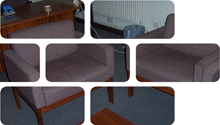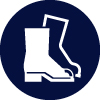
Office Furniture Miscellaneous 20 03 07
Office furniture is manufactured in a wide range of items and from different materials that may have a reuse value if they are of good quality, undamaged and not contaminated. Office furniture includes tables, desks, chairs, benches, work stations, swivel chairs, filing cabinets, cupboards, hat stands, waste bins, storage shelves and kitchen items. They are manufactured in various colours, styles, shapes and sizes, depending on the specification required or user choice. They are of varying age, quality, finish and value depending on their function, finish and condition. Beware of large, top-heavy items when dismantling, moving and in storage. This DRIDS excludes electrical and electronic office furniture, as these are included in the WEEE Items DRIDS.
Usage & Probable Locations
Office furniture can be found in most types of buildings, structures and infrastructure. They are used by staff, teachers, pupils, patients and the general public during the normal operation of a facility, for storage purposes or the general comfort of occupants. They are commonly located in most rooms within offices, schools, universities, hospitals, industrial sites, retail, libraries and civic buildings.
Personal Protective Equipment
PPE requirements indicated are for guidance purposes only. DRIDS has identified the PPE that is mandatory on all demolition projects and ones that may be required subject to site specific Risk Assessment & Method Statement (RAMS). Hover over the icon to determine the types of PPE required for the removal of this material.
Removal, Segregation & Storage
Office furniture in good condition, undamaged, not contaminated and of economic value should be set aside for reuse. Furniture items should be removed, cleaned, segregated and stored carefully and safely to ensure their integrity and good condition. They should be stored away from demolition or refurbishment activities to prevent chips, cracks, contamination and breakage. Preferably they should be stored inside a building or under cover before removal from site. Office furniture destined for recycling or incineration with energy recovery should be free of contaminants, fixtures and fittings before distribution for further processing. Office furniture destined for landfill can be placed in mixed waste skips.
Tools
Fixtures, Fittings & Connections
Office furniture is commonly free standing and requires no fixtures, fittings or connections. Large tables, office desks and work stations may be disassembled to ease movement and storage. Some items may have the facility to be moved on wheels or rollers. Some may be fixed in place with brackets, screws, nuts and bolts.
Health & Safety
Subject to task-specific Risk Assessment & Method Statement (RAMS). Wear gloves and face mask when handling office furniture to prevent irritation, cuts and abrasion. Use eye protection when moving above-head items to prevent injury from dust or other particles that may have accumulated over time. Use eye protection when using hand tools. Only use a forklift if appropriately trained. Wash hands before eating or drinking.














